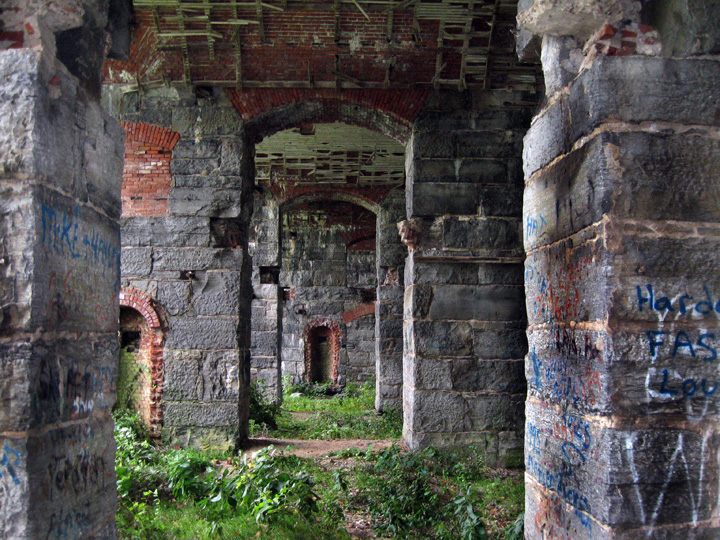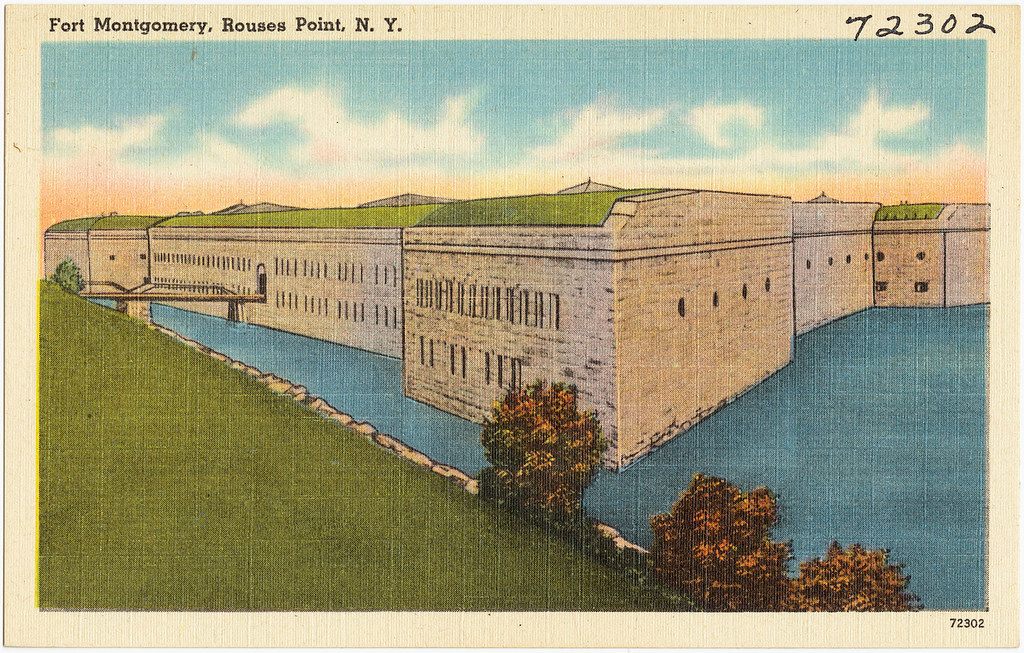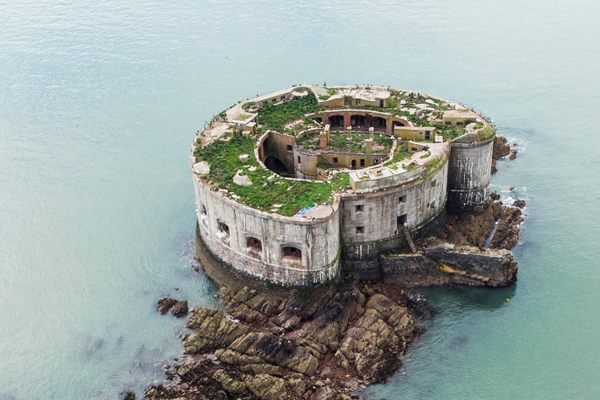For Sale: An Abandoned, Decaying Fort on a Private Island
Won’t someone, anyone, buy Fort Montgomery?

Pity Fort Montgomery. The years have not been kind to the three-story 19th-century structure falling to pieces in New York State where Lake Champlain meets the Richelieu River, right on the border between the United States and Canada. Over the centuries, some of the red bricks have crumbled, so archways look like mouths that are missing teeth. Brown leaves have tumbled in through the windows. Whatever limestone walls haven’t been claimed by plants have been marked up by humans brandishing paint, pens, blades, and a bawdy sense of humor.
And to add insult to injury, no one seems to want it.
The current owners have been trying to offload Fort Montgomery for decades. Back in the 1980s, they tried to negotiate a deal with the state of New York. Then, in 2006, they put it up for $9 million on eBay. In 2009, they tried again, and slashed the price to $3 million. Still, no nibbles. “It seems like it’d be worth $20 or $30 million with all the history behind it,” the owner Victor Podd told the Toronto Star the day before the auction closed. “We’ve had it out there. But if no one’s even offering $3 million, it’s hard to say we want more.” It’s currently listed on several real estate sites for just shy of $1 million.

The fort has the kind of wacky pedigree that might tantalize a history buff buyer. A previous fort built in 1816 on the same site was enough to launch a thousand face-palms: Because the engineers were a little murky on exactly where the border fell, a precursor meant to fortify the U.S. against northern invasion accidentally went up on the Canadian side. As James Millard, a historian who literally wrote the book on the moldering remains, has noted, that structure earned the nickname Fort Blunder. The highly visible, expensive mistake was eventually abandoned and plundered. Then, when the international border was redrawn in the 1840s, positioning the island in U.S. waters, Fort Montgomery went up in the footprint of the folly.

Why build a fresh fortress? The relationship between United States and Great Britain—of which Canada was still a part—remained strained after the Treaty of Ghent, which ostensibly smoothed the sharp edges of the conflict between the nations. “When the news of the treaty signed at Ghent in 1814 reached America, few people on either side of the border were so optimistic as to believe that the ‘peace and amity’ which it established were to be permanent; and on both sides military precautions were put in hand,” writes the Canadian military historian Charles Perry Stacey in an article in The American Historical Review.
Fort Montgomery went up over the course of three decades, and construction continued through the Civil War. It once boasted a moat and a drawbridge that linked it to land. Though it was never fully garrisoned, in its heyday it was well armed with guns pointing toward Canada. Now, though the property looks considerably worse for the wear, it’s on the National Register of Historic Places.

The artillery is long gone, and the fort is still in search of a new owner. Because it’s in bad shape and has been languishing on the market for so long—kind of like a lonely Island of Misfit Forts—the Preservation League of New York State included it in its 2009 “Seven to Save” list, a roundup of at-risk historic sites that need a little love. “As far as we know, there are no current plans for the site,” writes Katy Peace, communications director of the Preservation League of New York State, in an email. If you’ve got a cool million hanging around, you could set some in motion.












Follow us on Twitter to get the latest on the world's hidden wonders.
Like us on Facebook to get the latest on the world's hidden wonders.
Follow us on Twitter Like us on Facebook